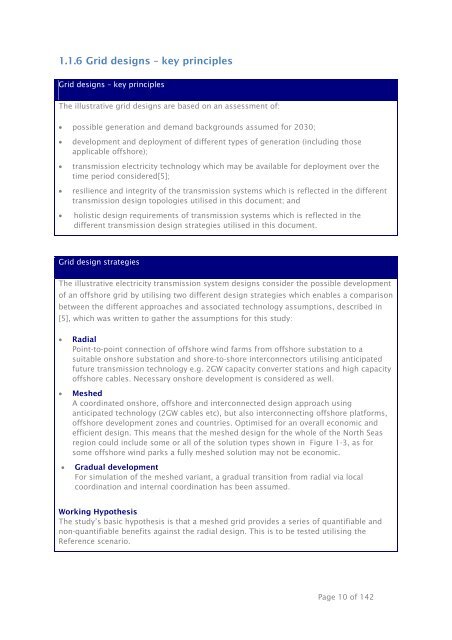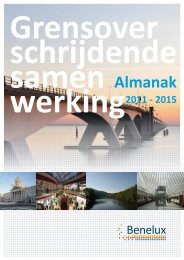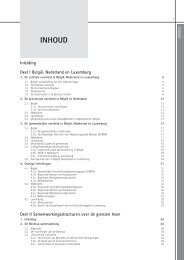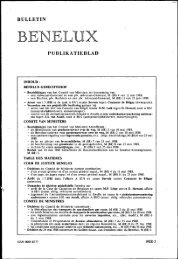The North Seas Countries' Offshore Grid Initiative - Initial ... - Benelux
The North Seas Countries' Offshore Grid Initiative - Initial ... - Benelux
The North Seas Countries' Offshore Grid Initiative - Initial ... - Benelux
You also want an ePaper? Increase the reach of your titles
YUMPU automatically turns print PDFs into web optimized ePapers that Google loves.
1.1.6 <strong>Grid</strong> designs – key principles<br />
<strong>Grid</strong> designs – key principles<br />
<strong>The</strong> illustrative grid designs are based on an assessment of:<br />
possible generation and demand backgrounds assumed for 2030;<br />
development and deployment of different types of generation (including those<br />
applicable offshore);<br />
transmission electricity technology which may be available for deployment over the<br />
time period considered[5];<br />
resilience and integrity of the transmission systems which is reflected in the different<br />
transmission design topologies utilised in this document; and<br />
holistic design requirements of transmission systems which is reflected in the<br />
different transmission design strategies utilised in this document.<br />
<strong>Grid</strong> design strategies<br />
<strong>The</strong> illustrative electricity transmission system designs consider the possible development<br />
of an offshore grid by utilising two different design strategies which enables a comparison<br />
between the different approaches and associated technology assumptions, described in<br />
[5], which was written to gather the assumptions for this study:<br />
Radial<br />
Point-to-point connection of offshore wind farms from offshore substation to a<br />
suitable onshore substation and shore-to-shore interconnectors utilising anticipated<br />
future transmission technology e.g. 2GW capacity converter stations and high capacity<br />
offshore cables. Necessary onshore development is considered as well.<br />
Meshed<br />
A coordinated onshore, offshore and interconnected design approach using<br />
anticipated technology (2GW cables etc), but also interconnecting offshore platforms,<br />
offshore development zones and countries. Optimised for an overall economic and<br />
efficient design. This means that the meshed design for the whole of the <strong>North</strong> <strong>Seas</strong><br />
region could include some or all of the solution types shown in Figure 1-3, as for<br />
some offshore wind parks a fully meshed solution may not be economic.<br />
Gradual development<br />
For simulation of the meshed variant, a gradual transition from radial via local<br />
coordination and internal coordination has been assumed.<br />
Working Hypothesis<br />
<strong>The</strong> study’s basic hypothesis is that a meshed grid provides a series of quantifiable and<br />
non-quantifiable benefits against the radial design. This is to be tested utilising the<br />
Reference scenario.<br />
Page 10 of 142










